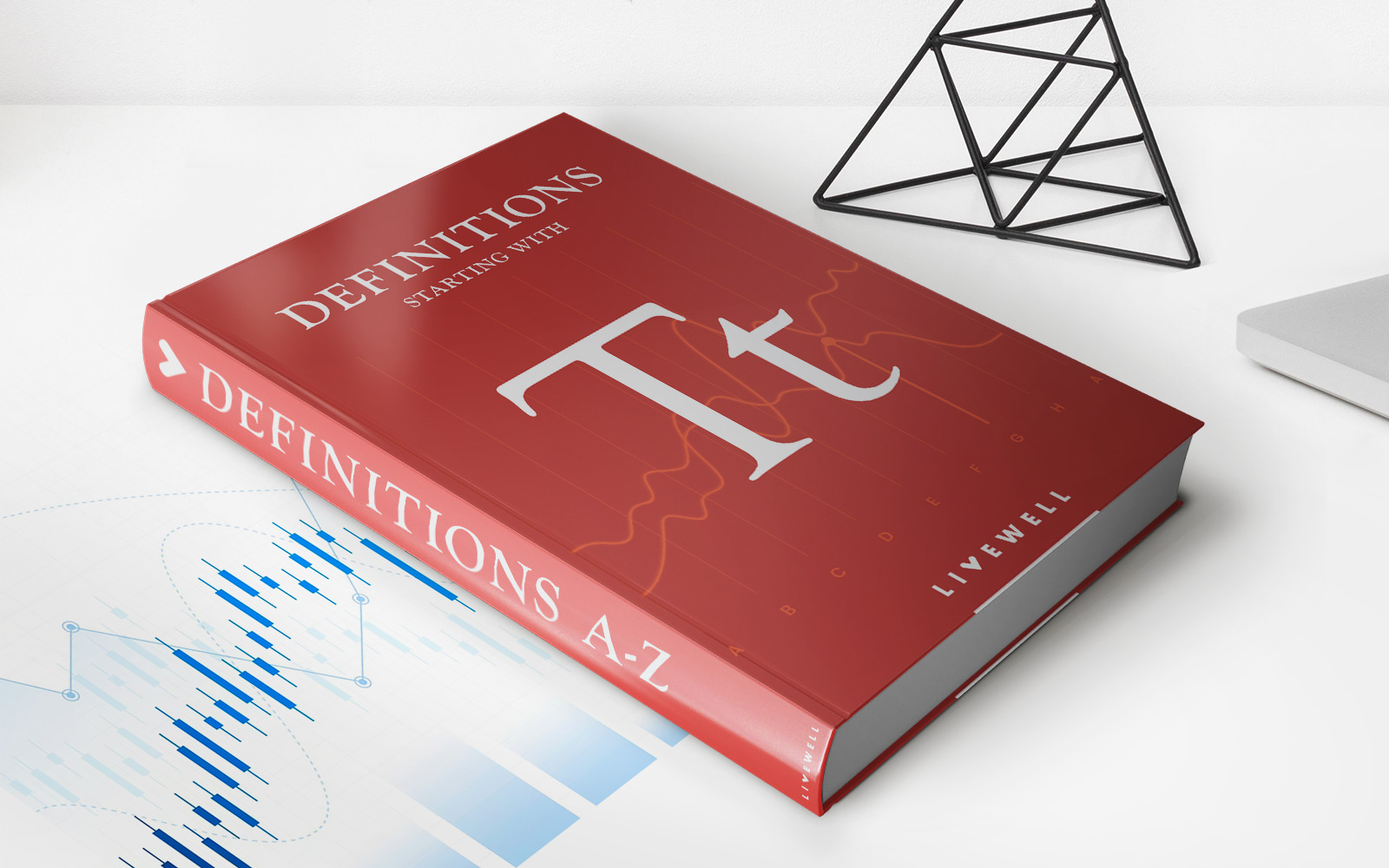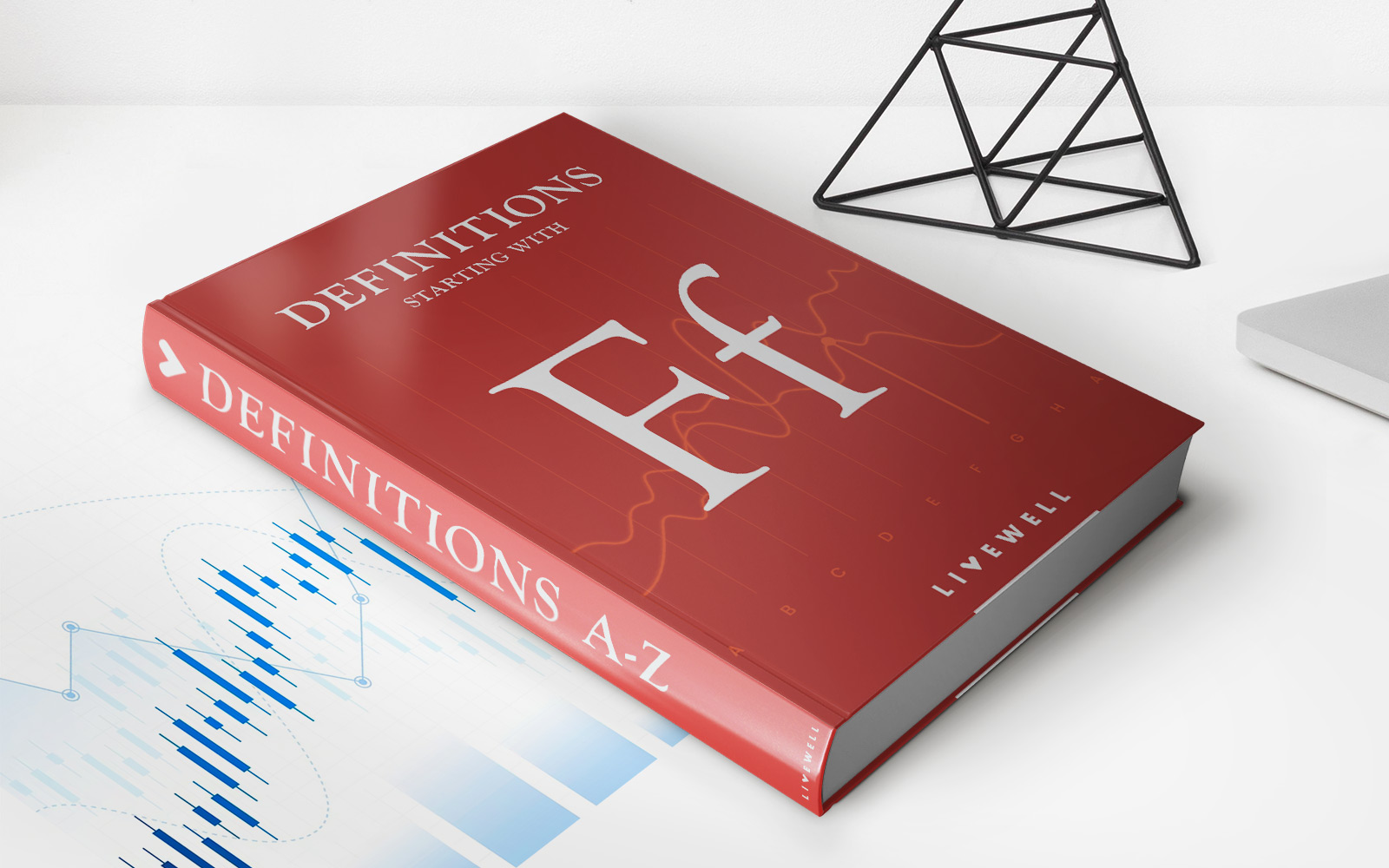

Finance
How Capital Structure Affects WACC
Published: December 24, 2023
Discover how the capital structure impacts the weighted average cost of capital (WACC) in the world of finance. Uncover key insights and strategies to optimize your financial decision-making.
(Many of the links in this article redirect to a specific reviewed product. Your purchase of these products through affiliate links helps to generate commission for LiveWell, at no extra cost. Learn more)
Table of Contents
Introduction
When it comes to making financial decisions, companies must carefully consider various factors that can impact their profitability and long-term success. One crucial aspect that plays a significant role in a company’s financial structure is its capital structure. Capital structure refers to the way a company finances its operations through a combination of debt and equity.
The capital structure of a company can have profound implications for its cost of capital and, in turn, its overall financial performance. One crucial metric that measures a company’s cost of capital is the Weighted Average Cost of Capital (WACC). WACC represents the average interest rate a company must pay on its capital, taking into account the proportion of debt and equity in the capital structure.
In this article, we will explore the relationship between capital structure and WACC and delve into the factors that influence WACC. Understanding how capital structure affects WACC can help companies optimize their financial structure to minimize costs and maximize profitability.
What is Capital Structure?
Capital structure refers to the way a company finances its operations by utilizing a combination of debt and equity. It represents the mix of different sources of funds that a company uses to support its activities and investments.
In simple terms, capital structure consists of two primary components: debt and equity. Debt financing involves borrowing money from external sources, such as banks, financial institutions, or issuing bonds. On the other hand, equity financing involves raising funds by selling ownership stakes in the company, typically through the issuance of stocks or shares.
The decision on how to structure the capital can have significant implications for a company’s financial health and performance. It affects the company’s ability to generate profits, manage risks, and meet its obligations to various stakeholders, including investors, creditors, and employees.
Companies have the flexibility to choose the proportion of debt and equity in their capital structure, depending on their specific needs, industry dynamics, and financial goals. The choice between debt and equity financing depends on factors such as the company’s risk appetite, cost of borrowing, market conditions, and availability of funds.
It is important to note that the capital structure of a company can evolve over time. As a company grows and matures, its financing needs and strategies may change. For example, a startup company may rely heavily on equity financing to support its growth, while a well-established company may have a more balanced mix of debt and equity.
Ultimately, the goal of determining the capital structure is to strike a balance between the cost of capital and risk. By using an optimal mix of debt and equity, companies aim to minimize their cost of capital while maintaining financial stability and maximizing shareholder value.
What is WACC?
WACC stands for Weighted Average Cost of Capital. It is a financial metric that calculates the average cost of funds for a company by taking into account the proportion of debt and equity in its capital structure.
WACC is an important measure used by companies to make investment and financing decisions. It represents the minimum rate of return that a company must generate on its investments to satisfy its investors and lenders.
The calculation of WACC involves assigning weights to the cost of debt and equity and calculating the average of these weighted costs. The formula for calculating WACC is as follows:
WACC = (Weight of Debt * Cost of Debt) + (Weight of Equity * Cost of Equity)
The weight of debt and equity is expressed as a proportion of the total capital structure. For example, if the company has 70% debt and 30% equity, the respective weights would be 0.7 and 0.3.
The cost of debt represents the interest rate or yield that a company must pay on its outstanding debt. It is typically based on the market interest rates for similar debt instruments and takes into account the company’s creditworthiness and risk profile.
The cost of equity represents the rate of return expected by shareholders for investing in the company’s shares. It is usually estimated using financial models that consider factors such as the company’s beta, risk-free rate, and market risk premium.
By incorporating both debt and equity into the calculation, WACC reflects the overall cost of capital for a company. It represents the average return that the company must provide to compensate both debt holders and equity investors for their respective risks.
It is important to note that WACC is used as a discount rate in capital budgeting decisions. When evaluating potential investment projects, companies compare the expected returns of the projects to the WACC. If the expected return of a project exceeds the WACC, it is generally considered a favorable investment.
Overall, WACC helps companies assess the feasibility and profitability of their investment decisions, as well as evaluate their capital structure and financing options. By understanding and managing their WACC, companies can make informed financial decisions that align with their strategic objectives and maximize shareholder value.
Factors Affecting WACC
The Weighted Average Cost of Capital (WACC) is influenced by several factors that impact the cost of debt and equity for a company. These factors can vary depending on the company’s industry, financial health, and market conditions. Understanding these factors is crucial for companies to effectively manage their WACC and make informed financial decisions. Here are the key factors that affect WACC:
1. Cost of Debt: The cost of debt is influenced by factors such as the prevailing interest rates, the company’s creditworthiness, and the terms of the debt. Higher interest rates or increased credit risk can lead to a higher cost of debt, which in turn raises the WACC. Companies with a lower credit rating may have to pay higher interest rates on their debt, increasing their WACC.
2. Cost of Equity: The cost of equity is influenced by factors such as market conditions, the riskiness of the company’s stock, and the required rate of return expected by investors. A higher perceived risk in the company’s stock or a higher required rate of return by investors will result in a higher cost of equity, leading to an increased WACC.
3. Capital Structure: The proportion of debt and equity in the capital structure of a company directly impacts its WACC. A higher proportion of debt can result in a lower WACC initially, as debt tends to have a lower cost compared to equity. However, excessively high levels of debt can increase the perceived risk of the company, leading to higher borrowing costs and higher WACC.
4. Tax Rate: The tax rate plays a crucial role in determining the cost of debt. Interest payments on debt are tax-deductible, which lowers the cost of debt for companies. A higher tax rate leads to greater tax savings from interest expenses, resulting in a lower cost of debt and a lower WACC.
5. Market Conditions: External market conditions, such as interest rate fluctuations, overall market volatility, and investor sentiment, can significantly impact WACC. Changes in interest rates can directly affect the cost of debt, while market volatility and investor sentiment can impact the cost of equity. Companies must monitor market conditions and assess their potential impact on WACC to make informed financial decisions.
6. Company’s Risk Profile: The risk profile of a company, including factors such as industry risks, business risk, and financial risk, can influence WACC. Companies operating in riskier industries or facing higher levels of business or financial risk may have higher borrowing costs and required returns from investors, resulting in a higher WACC.
7. Weighting of Debt and Equity: The relative weighting of debt and equity in the capital structure also affects WACC. Companies with a higher proportion of equity financing will have a higher cost of equity, which will have a greater impact on the overall WACC. On the other hand, a higher proportion of debt financing can lead to a lower WACC initially, but excessively high debt levels can increase financial risk and raise the WACC.
By carefully considering these factors and analyzing their impact, companies can make strategic decisions to manage their WACC effectively. Balancing the cost of debt and equity, optimizing the capital structure, and maintaining a strong credit profile can help companies achieve a lower WACC, reducing their overall cost of capital and enhancing their financial performance.
Relationship between Capital Structure and WACC
The relationship between capital structure and the Weighted Average Cost of Capital (WACC) is critical for companies to understand as they strive to optimize their financial structure and minimize their cost of capital. Here’s a closer look at how capital structure influences WACC:
Optimal Capital Structure: Every company has an optimal capital structure that balances the use of debt and equity financing. This optimal mix minimizes the WACC, resulting in the lowest cost of capital for the company. The optimal capital structure is determined by factors such as industry norms, company risk profile, and market conditions.
Cost of Debt versus Cost of Equity: Debt financing generally carries a lower cost compared to equity financing. This is because debt providers have a fixed rate of return in the form of interest payments, while equity investors expect higher returns to compensate for the risk of owning shares in the company. As a result, increasing the proportion of debt in the capital structure can lower WACC, as the lower-cost debt reduces the overall cost of capital.
Trade-off Theory: The trade-off theory suggests that companies should strike a balance between the benefits and costs of debt. While debt financing lowers WACC, too much debt can increase financial risk and raise borrowing costs, ultimately increasing WACC. Therefore, companies need to consider the potential benefits of debt, such as tax advantages and additional financial leverage, while managing the associated risks.
Financial Distress Costs: As the proportion of debt in the capital structure increases, so does the risk of financial distress. Financial distress occurs when a company is unable to meet its financial obligations, leading to higher costs associated with bankruptcy or financial restructurings. These costs increase the overall riskiness of the company and can raise the cost of debt, thus increasing WACC.
Market Perception and Cost of Equity: The capital structure can impact how the market perceives the company’s risk and, in turn, the cost of equity. As the proportion of debt increases, the market may view the company as more leveraged and riskier, resulting in a higher cost of equity. This higher cost of equity raises WACC. Therefore, companies must carefully manage their capital structure to maintain a favorable perception among investors.
Weighting Effect: The relative weights assigned to debt and equity in the WACC calculation directly influence the impact of changes in the cost of each component. A change in the cost of debt will have a larger effect on WACC if debt has a higher weight in the capital structure, while a change in the cost of equity will have a larger effect if equity has a higher weight. Companies must consider these weighting effects when making decisions that impact their capital structure.
In summary, the relationship between capital structure and WACC is a delicate balance between the benefits and costs of debt and equity financing. By optimizing the capital structure to minimize WACC, companies can reduce their cost of capital and improve their financial performance. However, it is essential to find the right balance while considering factors such as risk, market perception, and the potential costs of financial distress. Through careful analysis and strategic decision-making, companies can achieve an optimal capital structure that aligns with their long-term financial goals.
Impact of Debt on WACC
The level of debt in a company’s capital structure has a significant impact on its Weighted Average Cost of Capital (WACC). Debt financing can influence WACC in several ways, affecting both the cost of debt and the cost of equity. Here are the key impacts of debt on WACC:
Cost of Debt: Debt financing typically comes with fixed interest payments that represent the cost of borrowing for the company. As the proportion of debt in the capital structure increases, the overall cost of debt becomes a more influential factor in the WACC calculation. Assuming other factors remain constant, a higher cost of debt raises the WACC.
Financial Risk: Increasing the level of debt in the capital structure raises the financial risk of the company. This is because debt payments are contractual obligations that need to be met, regardless of the company’s profitability. A higher level of debt increases the chances of financial distress, leading to higher borrowing costs and a potentially higher cost of equity, both of which contribute to a higher WACC.
Tax Shield: One advantage of debt financing is that the interest payments on debt are typically tax-deductible. This tax shield reduces the after-tax cost of debt, effectively lowering the cost of capital for the company. As a result, companies with a higher proportion of debt in their capital structure can benefit from a reduced WACC due to tax savings.
Market Perception: The capital structure of a company can influence how it is perceived by investors and the market. As the level of debt increases, the market may perceive the company as more risky due to the higher interest obligations and potential financial distress. This perception can result in a higher cost of equity, increasing the overall WACC for the company.
Optimal Debt Level: Every company has an optimal debt level that balances the benefits and costs of debt financing. Initially, adding debt to the capital structure reduces the WACC, as the lower-cost debt lowers the overall cost of capital. However, as the debt level increases beyond the optimal point, the negative impacts of financial risk and higher borrowing costs begin to outweigh the benefits, resulting in an increased WACC.
Leverage Effects: Debt can have leveraging effects on the company’s returns and equity value. When the returns from the company’s investments exceed the cost of debt, the equity value increases. This can result in a higher return on equity and a lower overall WACC. However, if the returns are not sufficient to cover the cost of debt, the equity value can decline, leading to a higher cost of equity and an increased WACC.
Overall, the impact of debt on WACC depends on the specific circumstances and the right balance between debt and equity financing. While debt can initially reduce WACC and lower the cost of capital, companies must carefully manage their debt levels to avoid excessive financial risk and negative market perception. By finding the optimal debt level and maintaining a strong financial position, companies can strike the right balance and minimize their WACC, ultimately enhancing their financial performance.
Impact of Equity on WACC
The proportion of equity in a company’s capital structure has a notable impact on its Weighted Average Cost of Capital (WACC). Equity financing affects WACC primarily through the cost of equity, which directly influences the overall cost of capital. Here are the key impacts of equity on WACC:
Cost of Equity: Equity financing represents ownership in the company and the return expected by equity investors. The cost of equity is influenced by factors such as market conditions, investor expectations, and the perceived riskiness of the company’s stock. As the proportion of equity in the capital structure increases, the cost of equity becomes a more significant factor in the WACC calculation. Assuming other factors remain constant, a higher cost of equity raises the WACC.
Market Perception: The capital structure, particularly the proportion of equity, can influence how the market perceives the company’s risk. Higher levels of equity ownership can be perceived as a sign of stability and lower financial risk, which may lead to a lower cost of equity. Consequently, a lower cost of equity can reduce the overall WACC for the company.
Financial Flexibility: Equity financing provides financial flexibility to companies. Unlike debt, equity does not require regular interest payments and has no contractual obligations. This flexibility can be advantageous during economic downturns or unforeseen circumstances. The presence of equity financing can lower the overall financial risk of the company, potentially leading to a lower cost of equity and a reduced WACC.
Retained Earnings and Growth Opportunities: Retained earnings represent the reinvestment of past profits into the company. By retaining earnings and utilizing them for funding investments and growth opportunities, companies can reduce their reliance on external financing. This can potentially lower their cost of equity as investors perceive a lower risk associated with self-financing. By reducing the cost of equity, companies can also achieve a lower WACC.
Dividend Policy: The dividend policy of a company can have an indirect impact on the cost of equity and, consequently, on the WACC. A company that consistently pays high dividends may be seen as a stable and mature entity, resulting in a lower risk perception by investors and a lower cost of equity. Conversely, a company that retains more earnings and reinvests them for growth opportunities may be perceived as riskier, leading to a higher cost of equity and a higher WACC.
Investor Expectations: The expectations and preferences of equity investors can influence the cost of equity and WACC. Investor sentiment and the required rate of return on equity can fluctuate due to various factors such as market conditions, economic outlook, and industry trends. Managing investor expectations and effectively communicating the company’s growth prospects and financial performance can help lower the cost of equity and reduce WACC.
Overall, the proportion of equity in a company’s capital structure significantly affects its WACC. Balancing the benefits of equity financing such as market perception, financial flexibility, and growth opportunities with the potential costs in terms of the cost of equity is critical. By carefully managing the equity component of the capital structure and aligning it with the company’s strategic objectives, companies can optimize their WACC and maximize their financial performance.
Optimal Capital Structure and WACC
The concept of optimal capital structure revolves around finding the right mix of debt and equity financing that minimizes the Weighted Average Cost of Capital (WACC) for a company. The optimal capital structure is crucial for maximizing the company’s value and profitability. Here’s a closer look at the relationship between optimal capital structure and WACC:
Minimizing WACC: The primary objective of determining the optimal capital structure is to minimize WACC. A lower WACC reflects a lower cost of capital for the company, making it more attractive for investors and potentially enhancing its competitiveness in the market.
Trade-off Theory: The trade-off theory argues that there exists an optimal point where the benefits of debt financing, such as tax advantages and increased financial leverage, outweigh the costs. As the proportion of debt increases, the WACC initially declines due to the lower cost of debt. However, beyond a certain point, the increased risk of financial distress and higher borrowing costs associated with excessive debt lead to an increased WACC.
Risk and Financial Flexibility: The optimal capital structure balances the risk and financial flexibility of the company. A higher proportion of equity financing can provide stability and reduce financial risk, potentially lowering the cost of equity and WACC. On the other hand, debt financing can offer tax advantages and leverage, reducing WACC initially. Companies must assess their risk tolerance and financial objectives to determine the optimal level of debt and equity in their capital structure.
Industry and Market Norms: Optimal capital structure can vary across industries due to their unique characteristics and risk profiles. Companies operating in stable or less cyclical industries with predictable cash flows may lean towards higher levels of debt in their capital structure. Conversely, companies in highly volatile or capital-intensive industries may maintain lower levels of debt to mitigate risk and maintain financial stability. Market norms and competitor analysis also play a role in determining the optimal capital structure.
Access to Financing: The availability and cost of external financing can also influence the optimal capital structure. Companies with limited access to debt financing may need to rely more on equity financing, resulting in a higher cost of capital. Similarly, companies with strong credit ratings and lower borrowing costs may opt for a higher proportion of debt to take advantage of cheaper financing options.
Growth and Investment Opportunities: The optimal capital structure takes into account the company’s growth ambitions and investment opportunities. Companies aiming for rapid expansion or pursuing significant capital investments may choose a higher proportion of equity financing to provide financial flexibility and reduce the risk of financial distress. This allows them to retain earnings and reinvest in growth initiatives.
Flexibility and Adaptability: The optimal capital structure is not a static concept and can evolve over time. As market conditions change, the company’s financial health improves, or investment priorities shift, adjustments to the capital structure may be necessary. Regular assessment and monitoring of the capital structure can ensure that it remains aligned with the company’s objectives and market dynamics.
In summary, the optimal capital structure seeks to strike the right balance between debt and equity financing to minimize the WACC. The determination of the optimal capital structure requires careful consideration of various factors, including risk tolerance, industry norms, market conditions, and growth objectives. By finding the optimal mix, companies can enhance their financial performance, attract investors, and capitalize on investment opportunities to achieve long-term success.
Case Studies on Capital Structure and WACC
Examining real-world case studies can provide valuable insights into the relationship between capital structure and the Weighted Average Cost of Capital (WACC). These examples showcase how companies have managed their capital structure to optimize their WACC and achieve financial success. Here are two notable case studies:
Case Study 1: Company A – Technology Start-Up:
Company A is a technology start-up that recently went public. To fund its rapid expansion and product development, the company initially relied heavily on equity financing. As a result, the proportion of equity in the capital structure was high, leading to a relatively higher cost of capital.
As the company gained traction, it successfully secured a significant debt financing opportunity at a favorable interest rate due to its strong growth potential and solid financial position. This infusion of debt helped the company better manage its capital structure by incorporating debt financing while still maintaining a reasonable risk profile.
The impact on WACC was significant. The lower cost of debt reduced the overall cost of capital, resulting in a reduced WACC. This allowed the company to pursue aggressive growth strategies without significantly diluting shareholders’ equity and maximizing the return on investment.
Case Study 2: Company B – Retail Industry:
Company B operates in the retail industry and has historically had a conservative approach to capital structure. It maintained a lower proportion of debt due to concerns about potential financial risks and uncertainties in the retail sector.
Following a comprehensive analysis of its financial position and market conditions, Company B decided to introduce a moderate level of debt to improve its capital structure. The added debt allowed the company to undertake strategic expansions, renovate stores, and invest in advanced inventory management systems.
While the increase in debt initially raised concerns among investors, Company B effectively communicated the rationale behind the decision and the positive impact on its ability to capture growth opportunities. The improved financial flexibility and lower borrowing costs associated with the new debt financing resulted in a reduced WACC.
Both case studies highlight the importance of strategic capital structure management in optimizing WACC. Understanding the market conditions, financial position, and growth objectives allows companies to strike the right balance between debt and equity financing to minimize costs and maximize profitability.
It is important to note that each company’s optimal capital structure and WACC depend on various industry-specific factors, market conditions, and company-specific goals. Therefore, the lessons learned from these case studies may not be directly applicable to all companies and industries.
However, the key takeaway is the significance of analyzing and managing the capital structure to effectively optimize WACC. By carefully evaluating their unique circumstances and considering various financing options, companies can position themselves for sustainable growth and improved financial performance in the long run.
Conclusion
The relationship between capital structure and the Weighted Average Cost of Capital (WACC) is a crucial aspect of financial management for companies. Optimizing the capital structure to minimize WACC is essential for maximizing profitability, attracting investors, and achieving long-term success.
Throughout this article, we have explored the key concepts related to capital structure and WACC. We discussed how capital structure refers to the mix of debt and equity financing a company utilizes to fund its operations. WACC, on the other hand, is a metric that calculates the average cost of funds for a company, taking into account the proportion of debt and equity.
We explored the factors that influence WACC, such as the cost of debt and equity, tax rates, market conditions, and the company’s risk profile. Understanding these factors helps companies make informed financial decisions and manage their WACC effectively.
We also examined the impact of debt and equity on WACC. Debt financing can initially lower WACC due to lower borrowing costs, but excessive debt can increase financial risk and raise WACC. Equity financing influences WACC through the cost of equity and market perception. Striking a balance between debt and equity is crucial in achieving an optimal capital structure and minimizing WACC.
Furthermore, we discussed the importance of identifying the optimal capital structure for a company. This includes considering industry norms, market conditions, risk tolerance, growth opportunities, and access to financing. The optimal capital structure aims to find the right mix of debt and equity that minimizes WACC and aligns with the company’s objectives.
Lastly, we examined case studies illustrating the impact of capital structure decisions on WACC. Each case study highlighted how companies strategically managed their capital structure to optimize their WACC and fuel growth.
In conclusion, understanding the relationship between capital structure and WACC is fundamental for companies in making financial decisions that impact their overall cost of capital and financial performance. By carefully analyzing their unique circumstances, market conditions, and growth objectives, companies can determine their optimal capital structure, minimize their WACC, and create a solid foundation for sustainable growth and success in the dynamic business landscape.














